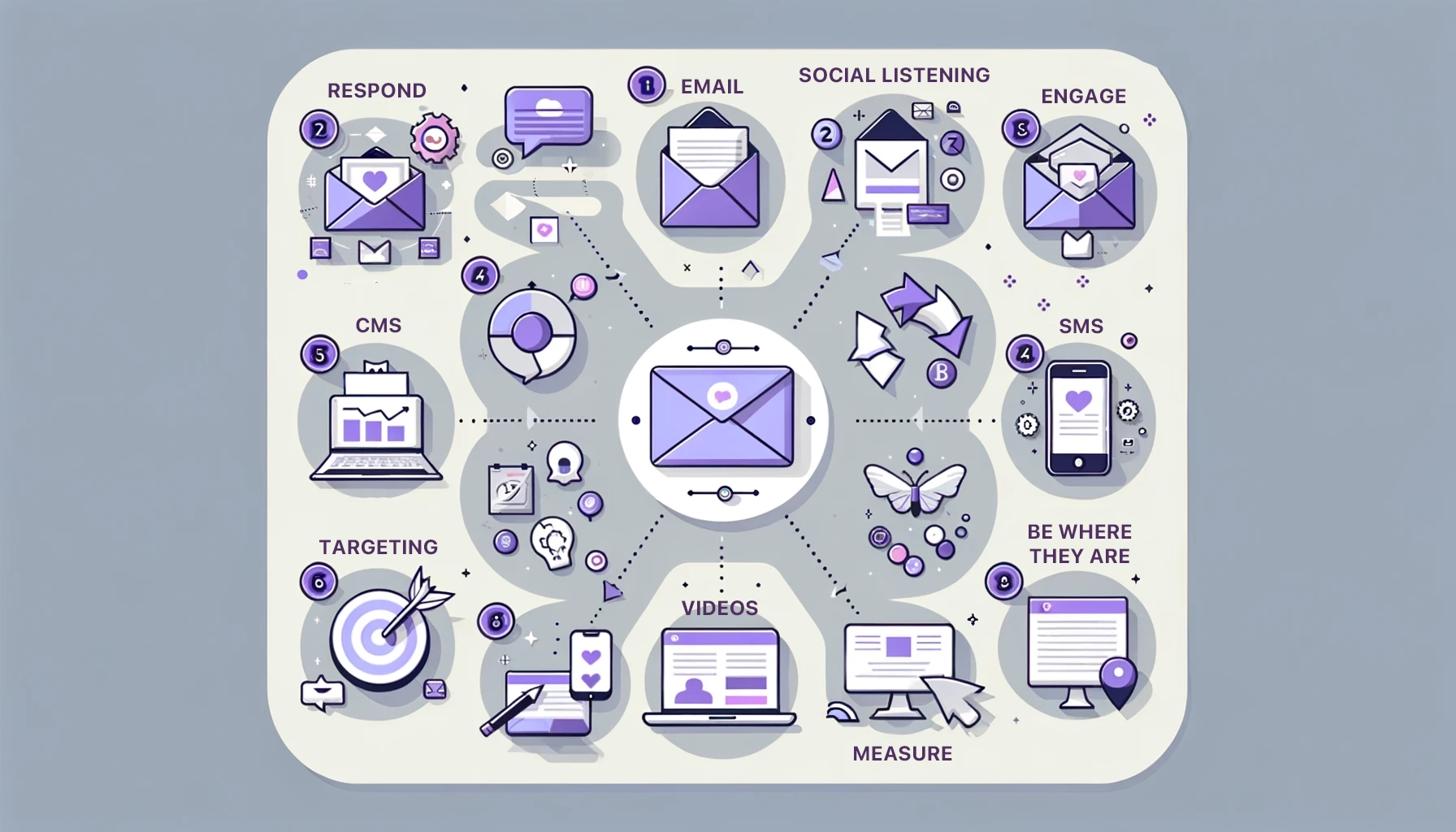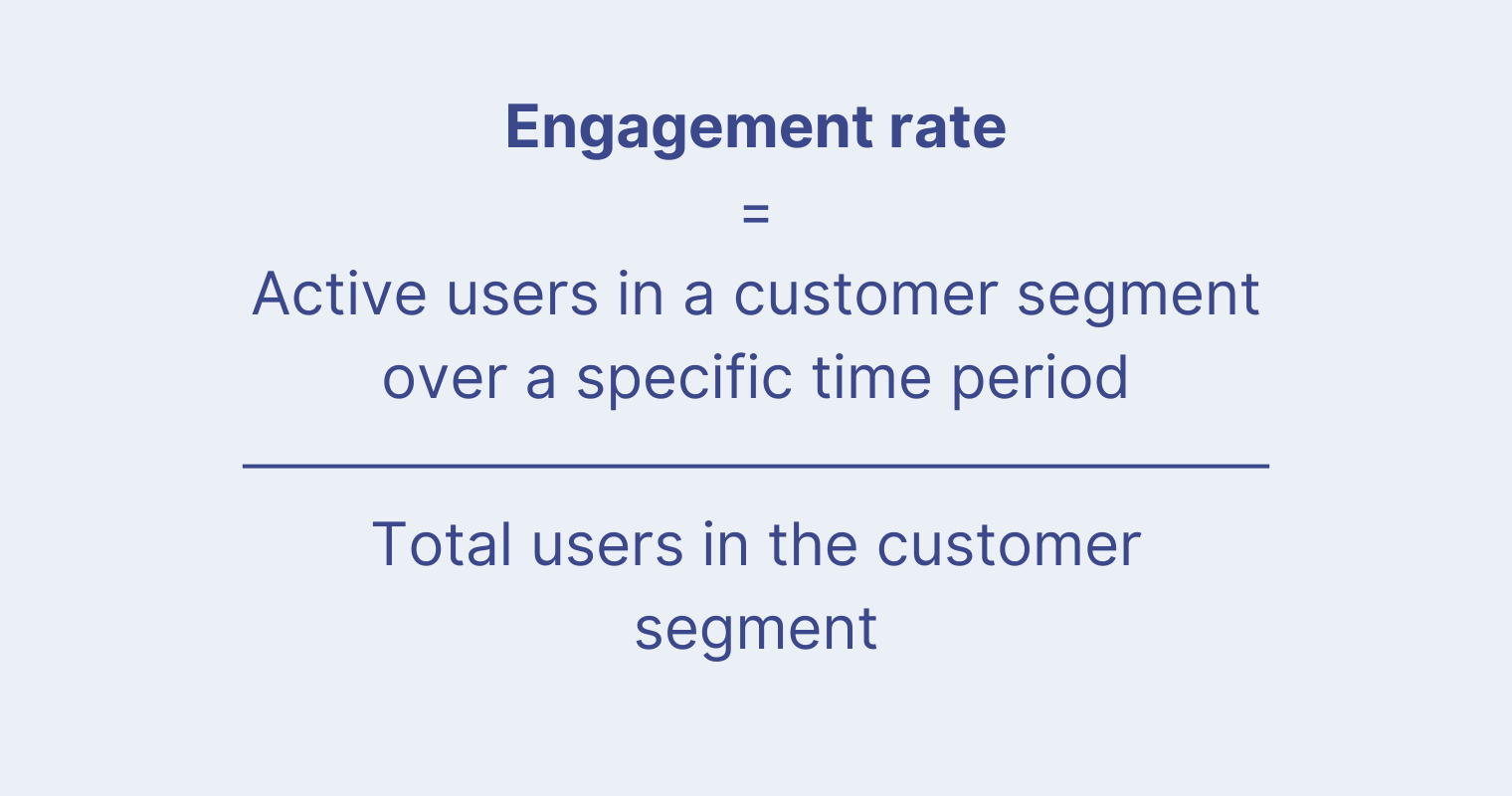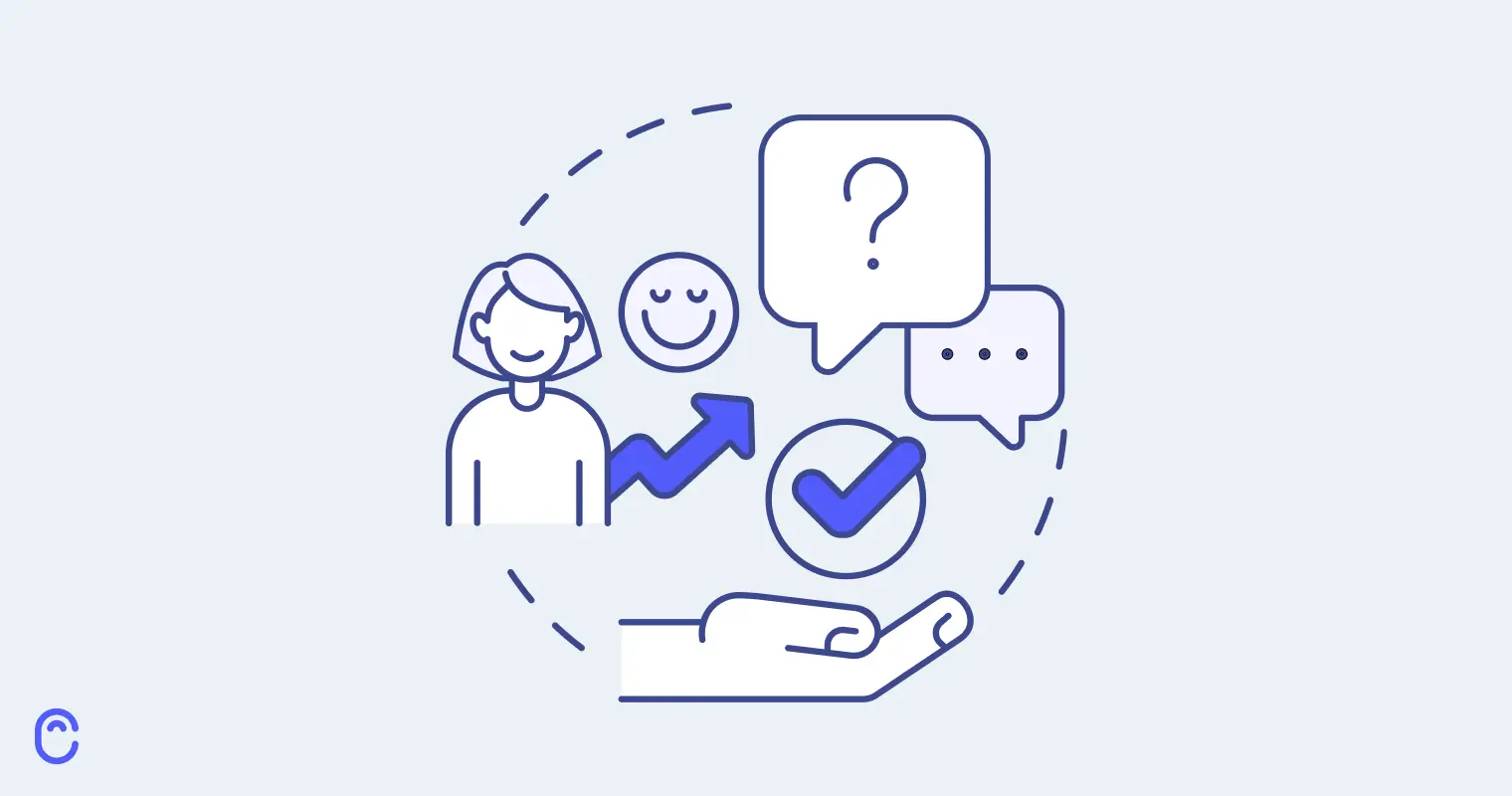We’ve all felt the sting of publishing content or a campaign, excited to hear raving feedback, and then … Crickets. Zilch. Nada.
Not a fan or engaged customer in sight. Except for maybe your mom? (Hi, mom!)
But here’s the deal.
You need customer engagement.
As a software developer, product manager, or customer support rep, your customers are your bread and butter. They’re the captains of the ship; without them, your role would look a lot different (as in nonexistent).
However, learning how to engage with customers can often feel like a full-time job. How can you be responsible for managing a team, creating and testing new products, and keeping up with this vital marketing goal?
The answer is to harness customer engagement strategies that align with your company’s unique growth goals. That’s it!
Feeling stuck on what or how that could look like? We’re here to help.
In today’s article, we’re revealing what customer engagement is, why it matters, and the benefits of implementing it. We’re also covering engagement strategies and a formula you can use to measure their success.
Ready to learn how to make the most of customer engagement?
Let’s begin!
What is customer engagement?
Customer engagement is how present customers are when they stumble upon your brand.
For instance, do they stop and read your blog content (like you’re currently doing with ours? 😉)
Do they respond to your questions in social media posts?
Do they take the action you’ve asked them to take in your newsletter’s CTA?
If yes, you’re effectively creating an emotional connection between your brand and customer.
Customer engagement ultimately focuses on:
- The quality of your customer relationships
- How often customers engage with your brand
- How customers engage with your brand
When you explore the quality of your customer relationships, you might take a look at:
- Context: In what context do customers interact with your brand?
- Time: How much time are customers investing when interacting with your brand?
- Frequency: How frequent or sporadic are your customer interactions with your brand?
Why does customer engagement matter?
Measuring customer engagement lets you know how effective your marketing and product design efforts are.
Without deep insights into how your customers think, feel, and absorb your brand, you’ll find it difficult to pivot when things go awry.
Customer engagement strategies can help you create a thriving business. They could involve uncovering product design glitches, feature favorites, or even which marketing staples your customers prefer. These valuable insights are very representative of the whole customer experience.
Measuring customer engagement can help you learn how to:
- Create personalized experience
- Refine or redesign your product
- Make adjustments to product features and pricing
- Tailor your communication style to your audience
- Prevent customer service and experience mishaps
- Match and even exceed customer expectations
Customer engagement benefits
Measuring and applying customer engagement strategies comes with a whole host of benefits.
Building trust and loyalty
Like with any relationship, the more interactions your customers have with you, the more they’ll begin to know, like, and trust you. You can nurture this trust by consistently showing up and delivering tremendous value. Many businesses are now creating engaging Instagram stories to build customer trust and engagement. This leads to engaged customers and brand loyalty.
Developing meaningful customer relationships
Building trust over time can help your company develop meaningful customer relationships. Do you offer tailored onboarding, demos, and meetings? Use these crucial customer-facing moments to learn names, solve pain points, and form ongoing relationships. This helps with the overall customer satisfaction.
Encouraging repeat purchases
One of the best things about customer loyalty is reaping its monetary rewards. A loyal customer is notorious for repeat purchases—that’s why they’re considered “loyal.” 💕 Explore what customer behavior leads to a repeat purchase and try to replicate that customer experience.
Gaining valuable feedback
When customers engage with one of your product polls, surveys, or questionnaires, you get valuable feedback. Use it to improve your product and business. Customer feedback is a goldmine — don’t overlook it.
Customer engagement strategies
Here are six customer engagement strategies you can employ to kick off your next campaign.

1. Use SMS
SMS — or text messaging — is one of the only ways to communicate directly with your customer besides email. We’ll discuss email marketing in a bit.
As text messaging increases responses by 45%, it’s considered one of the most engaging ways of customer interaction.
2. Collaboratively design and develop products with a CMS platform
Engage with your customers in powerful ways by bringing them along for the product development ride.
3. Encourage safe and secure engagement
Data privacy awareness has rapidly risen and shaped the online world’s trajectory.
As a result, businesses rely on data protection to manage data availability, security, and integrity. This also helps prevent data misuse.
Why does this matter?
For customers to engage with your brand, you need to make sure they feel safe enough to do so.
Laws like General Data Protection Regular (GDPR) and the California Consumer Privacy Act (CCPA) help here. They provide data guidance on improving users’ rights over their private information. This requires businesses to have a comprehensive data privacy policy.
Product businesses increasingly rely on data analytics to drive decisions. Therefore, creating a comprehensive and transparent privacy policy about how you collect data is crucial.
4. Fall in love with email marketing
In 2021, US users spent nearly 172 minutes checking their personal emails and around 149 minutes checking their work emails daily. Given this usage, it’s no wonder brands can’t afford to ignore the power of email marketing.
Segment your email marketing campaigns by customer group to boost your email engagement rates. Then, personalize each campaign accordingly to form a strong customer relationship.
You can send welcome emails to welcome a new customer, help an existing customer make the most of your product, and even create a real brand advocate with an effective email strategy. Do you have an actively disengaged customer? A tailored email marketing campaign can help bring them back, too.
Using CTAs and questions to encourage customers to talk back to you and complete an action is crucial.
For instance, ask your customer base what they think about a product feature you just rolled out. To nudge them along the sales funnel, you might ask them to download a freebie or sign up for an upcoming webinar. You can also use email to measure your net promoter score.
Email is an effective user engagement tool. Use it wisely.
5. Take video marketing seriously
Digital video-on-demand viewers in the US keep growing every year. In fact, the number of viewers in the US is projected to increase from 177.3 million in 2021 to 202.6 million in 2027.
In other words, using video content continues to be an effective customer engagement strategy. For example, it can boost brand awareness. A potential customer can discover your brand. A new customer can watch product tutorials. An existing customer can learn more about your services. This also helps your customer success team – educational videos can take some of the work off their plate.
One of the best ways to take advantage of this strategy?
Create short-form videos to feature on social media — especially TikTok, Instagram, and YouTube.
For instance, the following YouTube video by Tailor Brands has 2.9 million views. It is an excellent example of an engaging video. In just 44 seconds, the brand shows how its platform can help aspiring entrepreneurs set up their online businesses.
Use a social listening tool, like Brandwatch, to track and respond to all social media comments referencing your brand.
When responding, do so with intention.
Respond using four or more words and ask a question to keep the conversation going.
When possible, always present solutions to customer pain points. And don’t forget to respond to negative comments with a professional tone. If you notice spam, bots, or cyberbullying, report and delete those comments if they’re attached to your posts.
You can also use your social listening tool to grab valuable brand mentions and visuals for social proof in future marketing campaigns.
How do you measure customer engagement?
One of the most pivotal aspects of any customer engagement strategy is a hard focus on recorded customer data.
Recording and referencing customer data is essential to designing customer engagement campaigns personalized to your audience.
Using tools like customer data platforms can provide you with a 360-degree view of your customers, their pain points, and their needs.
It’s also important to measure your engagement efforts so you can make adjustments when needed.
Thankfully, measuring customer engagement is pretty straightforward.
Here’s a simple formula you can use:
Engagement rate formula = active users in a customer segment over a specific time period / total users in the customer segment

For instance, if you created a project management app, you might measure customer segments, like:
- Project managers
- Business analysts
- Project team members
- Project planners
From there, you can measure engagement more granularly, for instance:
- By channel
- By month, week, or day
- By feature
Applying this formula to your business and product will and should depend on your company’s unique growth and engagement goals.
The future of your customer engagement
Customer engagement is the key to unlocking your brand and product’s potential.
By understanding how your customers feel and think, you can create more opportunities for them to engage with your brand.
Customer engagement will continue to change over the years. But some things, like recording and referencing customer information, will stay the same.
So, stay data-focused. Stay goal-focused. And always, always stay customer-focused.
That’s it for today, friends.
Are you ready to boost your customer engagement efforts in 2023?
We hope today’s article has inspired you to do just that.





